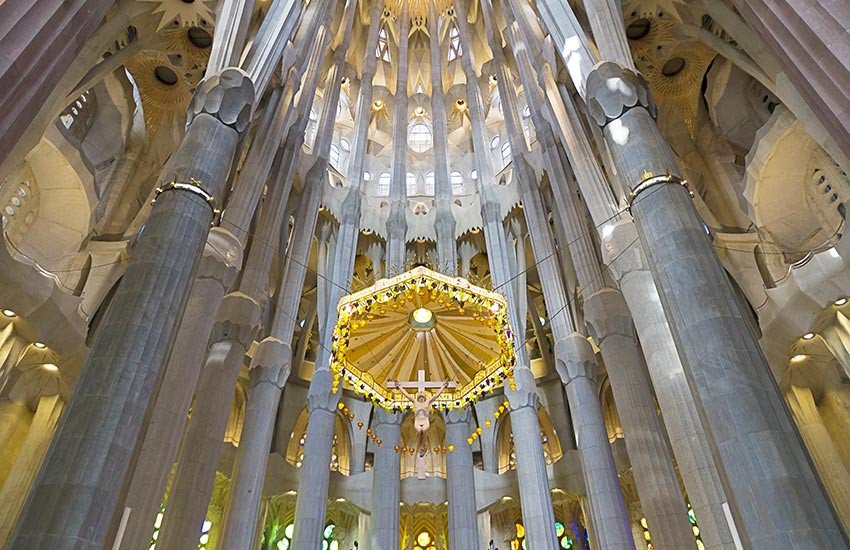¿Cómo entender a Gaudi sin arruinar tu cerebro?
13 julio, 2018 (11:07:13)It is practically impossible to visit Barcelona without knowing one, but several architectural creations by Antoni Gaudí. His understanding of design and architecture was quite eccentric at the time and, let's face it, is still eccentric today. You love him or hate him. However, there is a genius in his eccentricity, a genius that goes beyond flashy colors and psychedelic patterns. Therefore, leaving aside his feelings, Gaudi's works should be at the top of his list of places to see in Barcelona.

The roots of Gaudí's modernism.
Although, at first glance, Gaudí's buildings may seem a bit chaotic without measure, there is a rational reason behind each curve, ripple and angle. To understand your buildings, we have to go back to the beginning.
Gaudí (born on June 25, 1852) was a son of a boilermaker of humble origins. However, he showed an aptitude and interest in architecture at a very young age. Therefore, when he was old enough, he went to study in Barcelona, the intellectual center of Catalonia.
His fascination with nature was there from the beginning, but it took a while before his style evolved to its final form. When he graduated from the Provincial School of Architecture, his first creations were a slightly more floral version of typical Victorian architecture. However, as his career progressed, Gaudi turned to nature for inspiration more and more. One of his most famous quotes says "... originality consists in going back to the origins".
Gaudí and nature
His obsession with natural form is the reason why his work was so ahead of his time. He observed the natural structural forms and applied his rules and laws to constructions made by man. For example, he used colors, textures and natural predispositions of raw materials to create designs that not only seemed natural in relation to nature but also to the human body. But what does all this mean in practice?
For example, it created a completely new "balanced structure", that is, a structure that could stand on its own without internal or external support. He used this system to build two of Gaudi's main attractions in Barcelona, Casa Batlló (1904-06) and Casa Milà (1905-10). In addition, these two noble houses have a unique ventilation system (also completely inspired by nature) that would make today's air conditioning unnecessary. In Casa Batlló, in addition to the powerful "dragon" on the roof, you can also see how Gaudí used darker and lighter colors of the tiles and sizes and angles of the windows to distribute natural light through all the rooms in the house .

The definitive creation of Gaudí
However, the architectural achievement and Gaudí's most significant life work is the Basilica of the Sagrada Familia, still unfinished, that adorns the Barcelona skyline.
Some people find that the church is too much. Well, it is obvious that Gaudi unleashed all his creative powers in the project. However, each individual element incorporated into the structure has its meaning and purpose. The apparent chaos is a carefully orchestrated symfony. In addition to opulent religious symbolism, the church is an embodiment of the laws of nature.
Por ejemplo, las altas paredes de la Sagrada Familia están paradas sin ningún tipo de apoyo. Sus paredes se sostienen entre sí en perfecta compresión natural. ¿Cómo lo hizo Gaudi? Creó un modelo de "cadena colgante" de la iglesia a partir de pesos en cuerdas. En una escala de 1:10, trazó el contorno de la iglesia en una tabla de madera, la colocó en el techo y colgó hilos de los puntos donde quería colocar las columnas. Luego colgó pequeñas bolsas de wight (la diezmilésima parte del peso real que los arcos tendrían que llevar) sopesando los arcos formados naturalmente. Fotoó el modelo y calculó el ángulo natural modelado por gravedad de cada columna y arco. ¡Requiere mucho tiempo pero es absolutamente genial!
¿Ahora que?
This is what Gaudi is about. He was an eccentric genius far ahead of his time. Their designs were so intelligent that they make you wonder, why do not we use their natural ventilation or lighting systems in modern buildings often dark and heavy today ...
Then, when you visit the tourist attractions of Barcelona , give Gaudi the opportunity to prove his point. Every time you see a color, texture, shape or angle ... not only recognize its existence, but ask why is it there?

Para comentar, así como para ver ciertos contenidos de Hosteltur, inicia sesión o crea tu cuenta
Inicia sesiónEsta opinión no tiene comentarios.